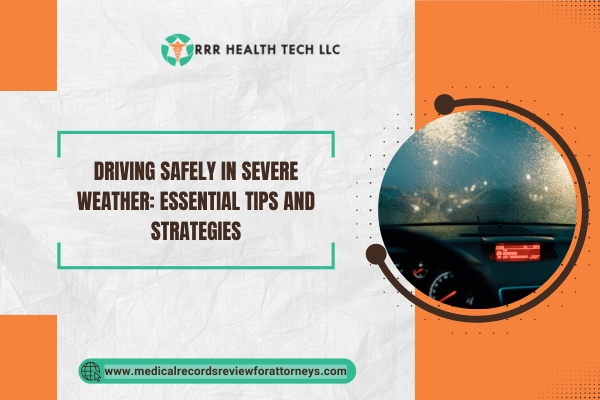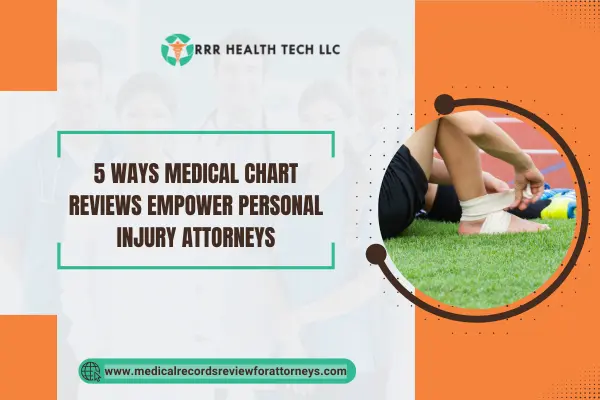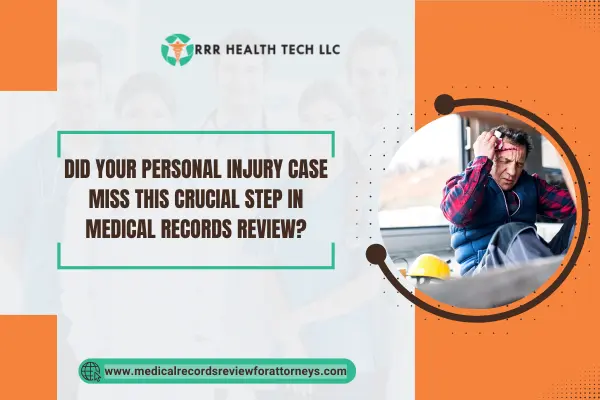
Introduction
No matter if you are a beginner or an expert when it comes to driving; facing severe weather is always going to prove to be a major challenge. Irrespective of whether it is a rainstorm, snowstorm, fog, or an ice storm, bad weather can drastically alter stability on the road. This detailed guide is focused on enabling and priming drivers on critical strategies and tips to help them withstand different extreme driving conditions. In addition to this, we will also look into how this knowledge can be useful to layers, and how it relates to the review of medical records following auto accidents.
Understanding Severe Weather Conditions
Types of Severe Weather
Rain and Flooding
• Heavy rain can cause lowered visibility and hydroplaning.
• Flooded roads can lead to severe problems such as your vehicle getting stuck.
Snow and Ice
• Harsh snow can cover road markings, while also creating slippery roads.
• Roadways may become dangerously icy without warning.
Fog
• It impairs visibility, making difficulty in seeing cars and highway boards.
• Underestimation of speed during fog could also be an issue.
Wind
• Depending on the strength of wind, even larger cars can feel unstable.
• Roads can also be filled with debris as a result of wind.
Preparing Your Vehicle for Severe Weather
Regular Maintenance Checks
- Tires: Check tire pressure and tread depth.
- Brakes: Ensure that brakes work perfectly and turn on within split seconds.
- Wipers and Lights: Change wiper blades and check all lights are working.
Emergency Kit Essentials
- First Aid Kit: Bandages, antiseptics, and some essential medicines.
- Flashlight: Allows you to see in the dark, but don’t forget to pack extra batteries.
- Woollen clothes: Protects against low temperatures. Use them if stuck in an open area.
Tips for Driving in Different Weather Conditions
Driving in Rain
- Decrease Velocity: Slightly reducing speed assists with keeping control and lessening the possibility of hydroplaning.
- Enhance Distance: More distance needs to be maintained between cars. It takes longer to stop.
- Activate Headlights: Helps you see, but also let other drivers see you.
Driving in Snow and Ice
- Start and stop gently. Jerky movements can cause vehicle to lose grip.
- Turn off headlights: Lights can reflect off snow.
- Maintain steady course: Don’t change lanes. You can skid off.
Driving in Fog
- Utilize Fog Lamps: Fog lamps are useful in enhancing your visibility while driving and should be used accordingly.
- Drive Slowly: Make sure that you are able to see enough to be able to stop while in your filed vision, where your eyes are directed.
- Avoid Stop and Go Driving: Come to a stop gradually so as not to get hit from behind.
Driving in Wind
- Don’t Forget to Hold the Steering Wheel: Take control while the vehicle is in motion, especially during strong winds.
- Get Away From Tall Cars: Stay away from buses and trucks, as they can be easily swayed by strong winds.
- Check for Obstruction: Watch out for branches and other things that may lie neglected on the road.
Legal Considerations for Driving in Severe Weather
Understanding Liability
- Negligence: If an accident occurs due to reckless driving in severe weather, the driver may be held liable.
- Insurance Claims: Understanding how weather conditions affect insurance claims can be crucial for legal professionals.
The Role of Medical Records Review
• Evidence of Accident: personal injuries caused by weather accidents need in-depth and thorough examination of medical records to substantiate claims.
• Medical Consultation: doctors can educate the layperson about the injuries and how they are sustained, alongside the dimension of the accident.
Case Studies
Case Study 1: Hydroplaning Incident
Overview: A vehicle skidded and hit another car after the driver lost control while driving in a downpour.
Challenges: Proving the driver’s negligence in regards to the safe conduct of driving in unfavourable weather conditions.
Solutions: An incident report showed a detailed analysis of the vehicle conditions and maintenance done, which revealed the driver did not replace broken down tires that led to the crash.
Case Study 2: Snow-Related Collision
Overview: A car accident involving many vehicles took place on an icy highway during the snowstorm.
Challenges: Dividing the blame between different drivers who were involved in the car crash.
Solutions: The review of medical documents was undertaken to check the injuries that were sustained as well as the activity chronology prior to the car accident.
Conclusion
During intense weather, preparation such as heightened vigilance is needed. Following implementation of the above safety measures, the likelihood of accidents reduces drastically. Junior or solo practitioners in the legal field, particularly in the field of medical records review will find this helpful because it assists in the understanding of the scenario surrounding vehicle accidents and impact injuries. After examining a weather related accident, do not hesitate to contact an attorney who understands the nuances of weather related liability and compensation.


